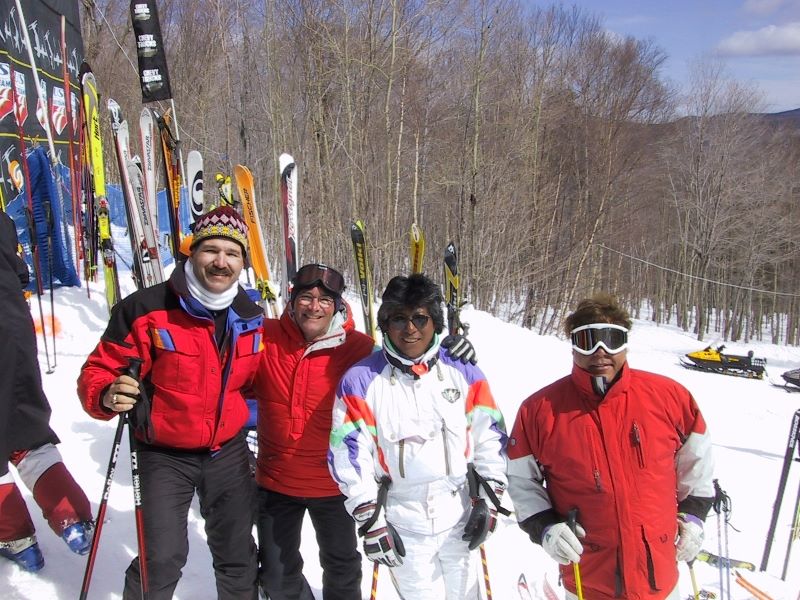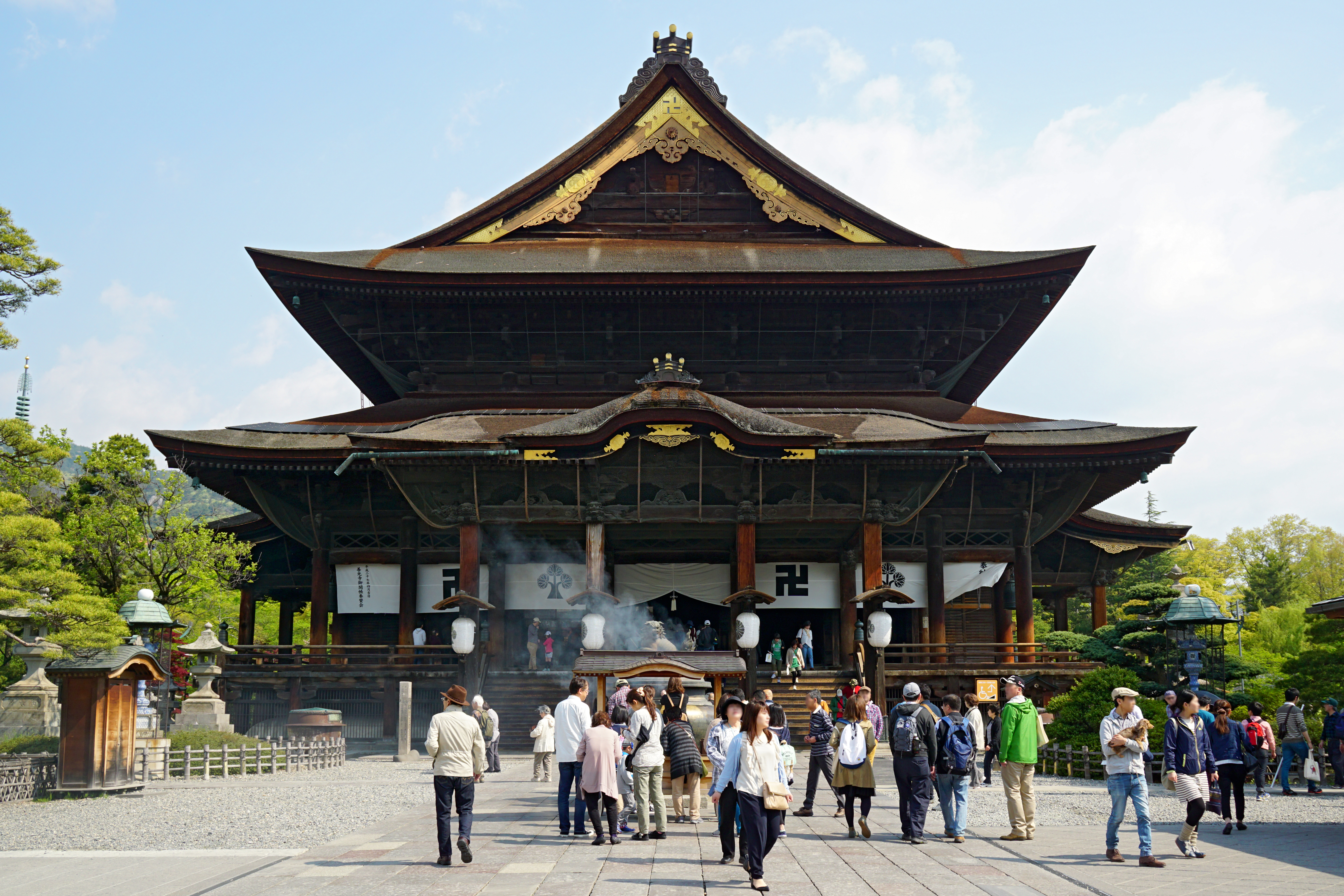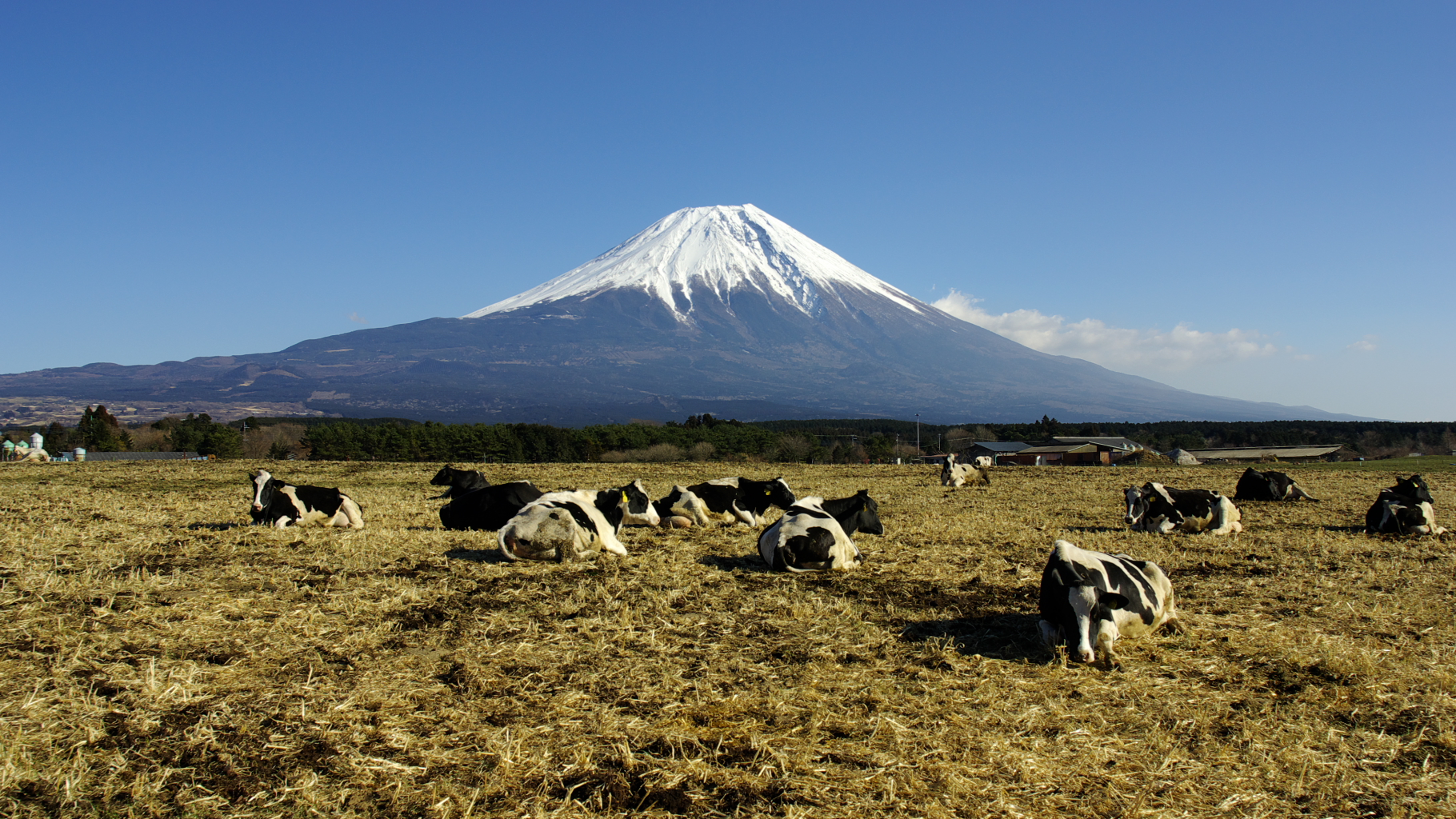|
Mount Iizuna
, also written as 飯綱山 (Iizuna-yama), is a stratovolcano located ten kilometers north-northwest of the heart of Nagano, Nagano Prefecture, Japan. The mountain straddles the city of Nagano and Iizuna town in Kamiminochi District, Nagano. Together with 1875.0 m, 1748 m, and others, it forms the Iizuna range. It has an elevation of 1,917 metres. Mount Iizuna is located within Myōkō-Togakushi Renzan National Park, and is one of the " Five Mountains of Northern Shinshu" ( 北信五岳) that also includes Mount Myōkō, Mount Kurohime, Mount Togakushi, and Mount Madarao. The mountain is one of the 200 most famous mountains in Japan (日本二百名山 Nihon 200 meizan), and one of the 100 most famous mountains in Nagano (信州百名山). This mountain is a sacred site for mountain-based religious sects such as Shugendo, and said to be the home of a ''tengu'' named Saburō. According to legend, there was once a strange, edible sand somewhere on the mountain, which the ... [...More Info...] [...Related Items...] OR: [Wikipedia] [Google] [Baidu] |
Nagano, Nagano
is the capital and largest Cities of Japan, city of Nagano Prefecture, located in the Nagano Basin (Zenkoji Daira) in the central Chūbu region of Japan. Nagano is categorized as a Core cities of Japan, core city of Japan. Nagano City is the highest prefectural capital in Japan, with an altitude of . The city is surrounded by mountains, the highest of which is Mount Takatsuma (2,353 m), and it is near the confluence of the Chikuma River—the longest and widest river in Japan—and the Sai River. , the city had an estimated population of 365,296 in 160,625 households, and a population density of 438 persons per km². The total area of the city is . Overview Nagano City, located in the former Shinano Province, developed in the Nara period (AD 710 to 794) as a temple town (''monzen machi''). The city of Nagano is home to Zenkō-ji, a 7th-century Buddhism, Buddhist temple that is listed as a National Treasure (Japan), Japanese National Treasure. Zenkō-ji was established at its ... [...More Info...] [...Related Items...] OR: [Wikipedia] [Google] [Baidu] |
Tengu
''Tengu'' ( ; , , ) are a type of legendary creature found in Shinto belief. They are considered a type of ''yōkai'' (supernatural beings) or Shinto ''kami'' (gods or spirits). The ''Tengu'' were originally thought to take the forms of bird of prey, birds of prey and a Monkeys in Japanese culture#Religion, monkey deity, and they were traditionally depicted with human, monkey, and avian characteristics. Sarutahiko Ōkami is considered to be the original model of Konoha-Tengu (a supernatural creature with a red face and long nose), which today is widely considered the ''Tengu''s defining characteristic in the popular imagination. He is the Shinto Japanese macaque, monkey deity who is said to shed light on Heaven and Earth. Some experts theorize that Sarutahiko was a sun god worshiped in the Ise Grand Shrine, Ise region prior to the popularization of Amaterasu. Buddhism long held that the ''Tengu'' were disruptive demons and wikt:harbinger, harbingers of war. Their image gradually ... [...More Info...] [...Related Items...] OR: [Wikipedia] [Google] [Baidu] |
Freestyle Skiing
Freestyle skiing is a skiing discipline comprising aerials, Mogul Skiing, moguls, Ski Cross, cross, Half-pipe skiing, half-pipe, slopestyle and big air as part of the Freestyle skiing at the Winter Olympics, Winter Olympics. It can consist of a skier performing aerial flips and spins and can include skiers sliding rails and boxes on their skis. Known as "hot-dogging" in the early 1970s, it is also commonly referred to as freeskiing, jibbing, as well as many other names, around the world. History Ski acrobatics have been exhibited since 1906. Aerial skiing was popularized by John Rudd at the 1908 U.S. National Ski Jumping Championships, National Championship Ski Jumping Tournament in Duluth, Minnesota, in the 1930s by Olle Rimfors, and again in the 1950s by Olympic gold medalist Stein Eriksen. Early US competitions were held in the mid-1960s. In 1969, Waterville Valley Ski Area in New Hampshire, formed the first freestyle instruction program, making the resort the birthplace o ... [...More Info...] [...Related Items...] OR: [Wikipedia] [Google] [Baidu] |
1998 Winter Olympics
The 1998 Winter Olympics, officially known as the and commonly known as Nagano 1998 (), were a winter multi-sport event held from 7 to 22 February 1998, mainly in Nagano, Nagano, Nagano, Nagano Prefecture, Japan, with some events taking place in the nearby mountain communities of Hakuba, Karuizawa, Nagano, Karuizawa, Nozawaonsen, Nozawa Onsen, and Yamanouchi, Nagano, Yamanouchi. The city of Nagano had previously been a candidate to host the 1940 Winter Olympics (which were later cancelled), as well as the 1972 Winter Olympics, but had been eliminated at the national level by Sapporo on both occasions. The games hosted 2,176 athletes from 72 nations competing in 7 sports and 68 events. The number of athletes and participating nations were a record at the time. The Games saw the introduction of Ice hockey at the 1998 Winter Olympics, women's ice hockey, Curling at the 1998 Winter Olympics, curling and Snowboarding at the 1998 Winter Olympics, snowboarding. Nati ... [...More Info...] [...Related Items...] OR: [Wikipedia] [Google] [Baidu] |
Spiral (bobsleigh, Luge, And Skeleton)
The Spiral is a bobsleigh, luge, and skeleton track located in Iizuna village, located north of Nagano, Japan. Used for the bobsleigh and luge competitions for the 1998 Winter Olympics, it is the first permanent bobsleigh, luge, and skeleton track in Asia and the first of its type in the world with two or more uphill sections. It is officially referred to as the Nagano Bobsleigh-Luge Park in Japan. History and current status The track was among part of the venues used for the 1998 Winter Olympics that was started in 1990.1998 Winter Olympics official report Volume 2. pp. 184-5, 226-9. Construction on the track started in November 1993 and was completed in March 1996 with |
Skiing
Skiing is the use of skis to glide on snow for basic transport, a recreational activity, or a competitive winter sport. Many types of competitive skiing events are recognized by the International Olympic Committee (IOC), and the International Ski and Snowboard Federation (FIS). History Skiing has a history of almost five millennia. Although modern skiing has evolved from beginnings in Scandinavia, it may have been practiced more than 100 centuries ago in the Altai Mountains, according to an interpretation of ancient paintings. However, this continues to be debated. The word "ski" comes from the Old Norse word "skíð" which means to "split piece of wood or firewood". Asymmetrical skis were used in northern Finland and Sweden until at least the late 19th century. On one foot, the skier wore a long straight non-arching ski for sliding, and a shorter ski was worn on the other foot for kicking. The underside of the short ski was either plain or covered with animal skin to aid ... [...More Info...] [...Related Items...] OR: [Wikipedia] [Google] [Baidu] |
Mount Fuji
is an active stratovolcano located on the Japanese island of Honshu, with a summit elevation of . It is the highest mountain in Japan, the second-highest volcano on any Asian island (after Mount Kerinci on the Indonesian island of Sumatra), and List of islands by highest point, seventh-highest peak of an island on Earth. Mount Fuji Hōei eruption, last erupted from 1707 to 1708. It is located about southwest of Tokyo, from where it is visible on clear days. Its exceptionally symmetrical cone, which is snow field, covered in snow for about five months of the year, is a Japanese cultural icon and is frequently depicted in art and photography, as well as visited by sightseers, hikers and mountain climbers. Mount Fuji is one of Japan's along with Mount Tate and Mount Haku. It is a List of Special Places of Scenic Beauty, Special Historic Sites and Special Natural Monuments, Special Place of Scenic Beauty and one of Japan's Monuments of Japan, Historic Sites. It was added to th ... [...More Info...] [...Related Items...] OR: [Wikipedia] [Google] [Baidu] |
Yatsugatake Mountains
The are a volcanic mountain range on the border between Nagano Prefecture and Yamanashi Prefecture on the island of Honshū in Japan. Description The mountain range consists of two volcanic groups, Northern Yatsugatake Volcanic Group and Southern Yatsugatake Volcanic Group. The two volcanic groups of Yatsugatake, North and South, have different characteristics. The North Yatsugatake mountains are gradual and lower while the South Yatsugatake mountains are steep and are more alpine in nature. The southern group ranges from the Natsuzawa Pass to the end of the mountain range. The northern range includes Mount Yoko (Northern Yatsugatake), Mount Yoko to the other end of the range. Mount Tateshina is also included. These mountains form a major part of the Yatsugatake-Chūshin Kōgen Quasi-National Park. Geology These mountains consist of older eroded complex volcanoes, which were made by repeated volcanic eruptions over many thousands years. The last eruption was estimated from 60 ... [...More Info...] [...Related Items...] OR: [Wikipedia] [Google] [Baidu] |
Hida Mountains
The , or , is a Japanese mountain range which stretches through Nagano, Toyama and Gifu prefectures. A small portion of the mountains also reach into Niigata Prefecture. William Gowland coined the phrase "Japanese Alps" during his time in Japan, but he was only referring to the Hida Mountains when he used that name. The Kiso and Akaishi mountains received the name in the ensuing years. Geography The layout of the Hida Mountains forms a large Y-shape. The southern peaks are the lower portion of the Y-shape, with the northern peaks forming two parallel bands separated by a deep V-shaped valley. It is one of the steepest V-shaped valleys in Japan. The Kurobe Dam, Japan's largest dam, is an arch dam located in the Kurobe Valley in the central area of the mountains. The western arm of mountains, also known as the Tateyama Peaks (立山連峰 ''Tateyama Renpō''), are dominated by Mount Tsurugi and Mount Tate. The eastern arm, known as the Ushiro Tateyama Peaks (後立山連� ... [...More Info...] [...Related Items...] OR: [Wikipedia] [Google] [Baidu] |
100 Famous Japanese Mountains
is a book written in 1964 by Mountaineering, mountaineer and author Kyūya Fukada.Hyakumeizan, Hiking Japan! . Japan Gazetteer. Accessed June 27, 2008. The list has been the topic of NHK documentaries, and other hiking books. An English edition, ''One Hundred Mountains of Japan'', translated by Martin Hood, was published in 2014 by the University of Hawaii Press (). The complete list (sorted into Regions of Japan, regions from northeast to southwest) is below. History Selections of celebrated mountains have been produced since the Edo period. Tani Bunchō praised 90 mountains in 日本名山図会 (''A collection of maps and pictures of famous Japanese mountains''), but among these were included such small mountains as Mount Asama in Ise, Mie, and Mount Nokogiri (Chiba), Mount Nokogir ...[...More Info...] [...Related Items...] OR: [Wikipedia] [Google] [Baidu] |
Mount Takatsuma
at straddles the border between Nagano and Niigata prefectures, in the northwest of the city of Nagano and southwest of the city of Myōkō (Niigata Prefecture), and is also the boundary between the Kanto and Chubu regional offices of the Japanese forest agency.高妻山. (Mount Takatsumaaccessed Sept 24 2022 The mountain forms part of the Myōkō-Togakushi Renzan National Park, a natural area protected by the Japanese government. Its summit dominates the Togakushi Mountains, and is the fourth highest mountain in the national park. The mountain is one of the 100 Famous Japanese Mountains, and one of the 100 most famous mountains in Nagano (信州百名山). Because of its pyramidal shape, the mountain is also referred to as Togakushi Fuji.高妻山 -戸隠連峰の最高峰・日本百名山-. (Mount Takatsuma: Highest in the Togakushi Mountainsaccessed Sept 24 2022 The mountain, along with nearby Mount Togakushi and Mount Iizuna, is a sacred site for mountain-based reli ... [...More Info...] [...Related Items...] OR: [Wikipedia] [Google] [Baidu] |
Alpico Kōtsū
is a public transport company in Nagano Prefecture, Japan. It is the core company of Alpico Group and is wholly owned by Alpico Holdings Co., Ltd. The company was known as until its merger with two affiliate companies on April 1, 2011. Headquarters The company's headquarters are at 1-1 Igawajō 2-chōme, Matsumoto, Nagano Prefecture 390-8518 Japan. Area served The company serves the cities of Chino, Nagano, Matsumoto, Nagano, Okaya, Nagano, Suwa, Nagano, and their vicinities. History *May 29, 1920 - Incorporated as Chikuma Railway (筑摩鉄道) *October 2, 1921 - Opens Shimashima Line railway between Matsumoto and Niimura. *May 3, 1922 - Extends Shimashima Line from Niimura to Hata. *September 26, 1922 - Extends Shimashima Line from Hata to Shimashima. *October 31, 1922 - Renamed as Chikuma Electric Railway (筑摩電気鉄道) *April 19, 1924 - Opens Asama Line tramway between Matsumoto and Asama-onsen.Wakuda, ''supra'', p. 48 *December 2, 1932 - Renamed as Matsumoto E ... [...More Info...] [...Related Items...] OR: [Wikipedia] [Google] [Baidu] |








